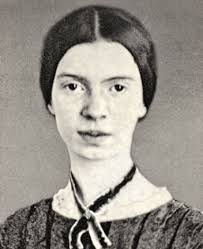"The United States of America"
"America the Beautiful"
"South, Central, and North America"
Why "America"?
In 1507, the German cartographer Martin Waldseemϋller drafted a map of the world. He labeled the southern continent of the western hemisphere "America", the very first time this designation was used – as far as has been documented – for any landmass. It was also the first western map to show an ocean between Asia and the western hemisphere; today we call it the Pacific.
The two-year effort was sponsored by a "gymnasium" of scholars located in France and with the patronage of the Duke of Lorraine.
 |
| Universalis Cosmographia |
Waldseemϋller and his colleague Matthias Ringmann (a translator of Greek and Latin) worked together to update existing maps. The resulting map was printed in April of that year and was called
Universalis Cosmographia. Only one copy of Waldseemϋller's map survives out of an original print run of 1,000, and we, as Americans, are lucky because it is housed in the Library of Congress (LoC). So when the coronavirus pandemic has been beaten, you can go look at our national treasures in person, including this historic map. The map is large scale, measuring 4 feet wide by 8 feet long, and divided into 12 separately-printed sections. It was purchased by the LoC in 2003 for $10 million! See
Universalis Cosmographia
 |
| Waldseemϋller's Gore Map |
Waldseemϋller also created "gores": map sections designed to be pasted onto a sphere, to more accurately reflect proportions than a flat, 2-dimensional map. Five copies of his gore map survive, of which one was auctioned by the famous auction house Christie's in 2017; it sold for £ 545,600 – that is, more than a half million pounds sterling.
The full name of the wall map is Universalis cosmographia secundum Ptholomaei traditionem et Americi Vespucii aliorumque lustrationes ("The Universal Cosmography according to the Tradition of Ptolemy and the Discoveries of Amerigo Vespucci and others").
Who was Ptolemy? Claudius Ptolemy was an ancient Greek astronomer and philosopher. He wrote a book titled Geography around the year 150 C.E. This book, actually a manuscript ("manu" – means "by hand"), described the world known to the learned people of his time. Sailors traded, and sometimes guarded, knowledge of shorelines and wind directions. There was much speculation in this early atlas which includes an essay on the art of cartography itself.
 |
| Agathodaemon's map |
But Ptolemy didn't actually create the map that Waldseemϋller was emulating. That credit goes to Agathodaemon of Alexandria (a city in northern Egypt named for Alexander the Great). Agathodaemon is a shadowy figure who probably lived sometime between the 2nd century C.E. and the 6th.
Ringmann noted that Europe and Asia were named for women, so he thought it would be acceptable to name the "new" land after a man. He had great respect for Amerigo Vespucci, whom he called a "sagacious genius", and chose a Latinized form of his name, "America", to use on his map. This was controversial, especially since Vespucci was still alive at that time.
 |
| Detail of Universalis Cosmographia showing "America" |
So who was Amerigo Vespucci?
Vespucci was a contemporary of Waldseemϋller's. He was born in Florence, Italy, and was an explorer, merchant, and navigator – the latter profession a highly respected one during a time before the ability to accurately determine longitude. He sailed on behalf of Spain in 1499 and then for Portugal in 1501. He was the first to use the term "New World" (to be precise he used the Latin "Mundus Novus") – which he coined after visiting what we now call Brazil. Its "discovery" has been attributed to him. On at least one of his voyages his ship captured natives of this New World, and enslaved them.
Although the historic record surrounding his activities has been debated, it appears that Vespucci was good at self-marketing. He wrote books about his adventures and might have overstated his prominence, leading to offers of employment upon his return by King Ferdinand of Portugal. Moreover, the Spanish crown proclaimed him a citizen of Castile and Leon.
To read more about Waldseemϋller's work and the exploration of the Mundus Novus, see
Christie's Auction Detail,
Library of Congress catalog entry, and
The Fourth Part of the World
And here is a list of eBooks on the exploration of the Americas which you can download for free using your WPL library card:
WPL eBooks



















































